Dedication
For my husband, Jon, who believes in me, even when I cant.
Acknowledgments
First, I have to thank my family for all their loving support and patience. To my husband and kids for putting up with less mommy time and for helping me achieve all my dreams. And to my mom, for teaching me to sew and giving me wings to fly on my own.
Thank you to Susanne Woods for starting me on this journey. And to all the wonderful people at C&T Publishing who have been so helpful, especially my editors, Cynthia Bix and Nanette Zeller.
Thanks to Rebecca Cobb for toiling away in the background, and to lots of other family and friends who contributed in countless ways.
Finally, my sincere appreciation goes to the entire wonderful craft-blogging community. Your work and acceptance inspires (and intimidates) me daily.
Introduction
The process of sewing and the medium of fabric are so different from any other art form Ive tried. And, believe me, Ive tried quite a few. If youre already an avid sewist, you probably know what Im talking about: I think its the tactile nature of fabric and the functional character of quilts, bags, and other sewn crafts. Even if you cant call yourself an artist yet (it took me a long, long time), you can sit in front of your machine and create. Anybody can. Really.
So, more than anything, what I hope for is for you to be fearless.
Sewing isnt that hard, but its often intimidating. This book isnt a comprehensive guide to sewing or quilting, but if youve got some basic skills, you should be able to make any of the projects successfully. So dont be afraid. And if youre more than a little experienced, I invite you to step outside your comfort zone and try something you havent before. That might mean a technique youve shied away from or even just choosing fabric and colors that arent your norm.
What youll end up with is art you can use. Thats what I really love about sewing. Sure, there are artists who sew amazing art quilts to hang on a wall. Theyre fabulous, and their beauty alone is a function. But I think sewing something that you or some lucky recipient is going to use has an extra level of satisfaction. You can quite literally wrap yourself in the love that quiltmakers put into their work.
Which brings us to the medium: fabric. Oh, how I love fabric. The choices and combinations are endless. And the colors and patterns are so inspiring. I mean, heres a creative endeavor that allows you to choose someone elses art, cut it up, combine it, and make it your own. What could be better? My own personal stash is quite large and growing every day.
But in all my passion for the beautiful patterns of printed fabrics, I realized I was often forgetting about solids. And what a shame, because there are so many advantages to adding solid-colored fabrics to your work: First, it can focus more attention on the piecing, and thats all your hard work, right? Also, you can use solid fabrics to highlight some of your favorite prints. These stand out more when used in combination with solids. And solid fabrics are certainly less expensive, so if youre using large quantities, you can save a lot of money by adding some solids. Finally, theres a clean, modern look that you just cant get with printed fabric alone. And these are only a few of the advantages to using solid fabrics that quickly come to mind.
I challenged myself to come up with projects that used both designer prints we all love and luscious solid fabrics. The quantities of each vary from project to project, as does their purpose in the project. Ive divided them in chapters based on the solids function, but I do hope youll be fearless and change it up as you see fit.


Fabric
Unless otherwise noted, all the projects in this book use what is known as quilters cotton. Its 100% cotton and widely available in fabric and quilt shops. It comes in a standard 4245 width in a variety of prints and solids.
There are different levels of quality of this cotton, and I highly recommend you buy your fabric in a quilt shop, either online or brick-and-mortar, to ensure the highest level of quality. If you are going to put so much effort and love into a project, its best to ensure that it will provide the results youre aiming for and will wear well over the years.
SOLID FABRICS
Several manufacturers produce beautiful, colored cotton solids that are widely available. For this book I used exclusively Kona Cotton Solids by Robert Kaufman. These come in more than 200 colors and are fabulous to work with. Ive listed the specific colors used in each project in Resources () for your reference. Some may become unavailable over time, but the most popular ones stick around for many years. If you can afford it, a nice stash of a wide range of solid-colored fabrics is great to have on hand. It allows you to audition colors with the prints you have chosen. You can also get a color card with swatches of all the Kona Solids on it, which will definitely make shopping online easier.
In a couple of projects I use linen as one of my solid fabrics. Linen or a linen blend fabric has a beautiful texture and simplicity to it. It comes in many shades of beige or tan, and even a variety of colors.
Finally, you might choose a pattern that calls for muslin, an inexpensive all-cotton fabric often used for making mockups of patterns before cutting into your actual yardage. It can be purchased in a variety of widths, but for the purpose of this book, Ill assume you will buy 3640 wide.
tip
You might consider using a flat sheet for the backing of your larger quilts. If you find one large enough, you wont have to piece it at all, and it may be less expensive. Just make sure to get high-quality cotton sheets.
FABRIC PREPARATION
Its often a good idea to prewash your fabric before cutting. It helps prevent colors from running or fabrics from shrinking differently. When I prewash, I simply run like-colored fabrics through a warm rinse cycle in my machine and dry them in the dryer. Then, of course, you have to press them before cutting.
That said, I often skip this step. Fabrics are so well made today and the colors dont often run. Prewashing does add some extra time to a project, and usually I just cant wait to get going (Im all about instant gratification). When Im working with hand-dyed fabric or using a very light fabric with darks, or if absolutely no shrinkage is key to the project, I might take the time.
fabric anatomy
Fabric most often comes folded in half on a cardboard bolt. The edges that are finished are called the selvages, and the edges that are cut to length are the cut edges. The grain of the fabric runs perpendicular to the selvages. The bias of fabric is on the diagonal.

Fabric is bought in increments of  of a yard. Most pattern yardage in this book allows for fabric shrinkage and the cutting of an extra strip or an additional
of a yard. Most pattern yardage in this book allows for fabric shrinkage and the cutting of an extra strip or an additional  yard in case of a goof.
yard in case of a goof.
Other Essentials
THREAD
Tons of different kinds of thread are on the market. Make sure you use the type of thread suited for your intended application and fabric, or youll wind up with headaches. My favorite for quilting and the other projects in this book is high-quality 100% cotton thread. All-purpose polyester thread or even cotton-wrapped polyester thread will work just fine for piecing. Beautiful, shiny rayon thread is used for embroidery; you should not use it for piecing. For machine quilting, 100% cotton, polyester, and rayon threads are good choices.


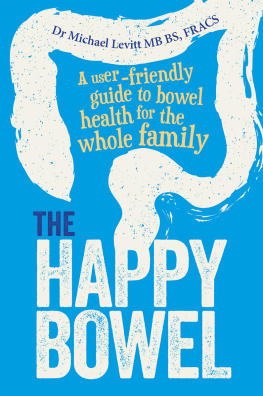
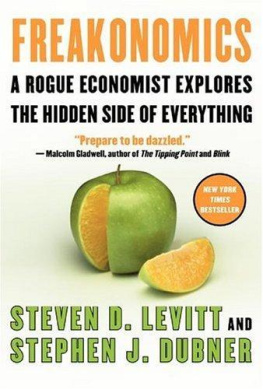

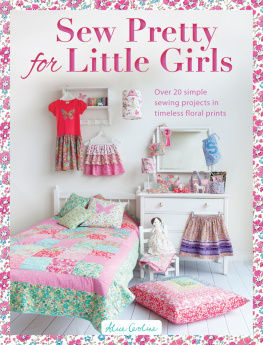

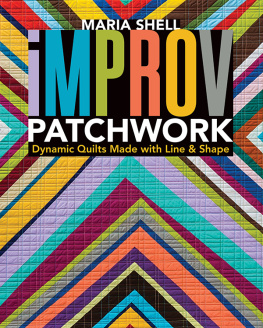
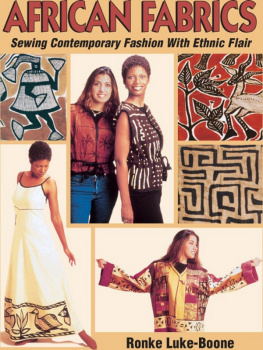
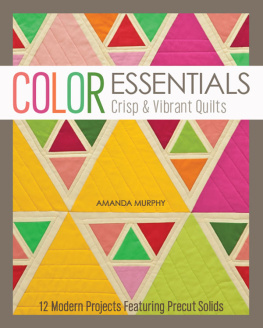
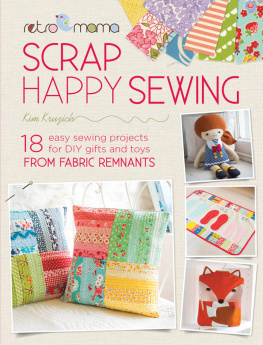
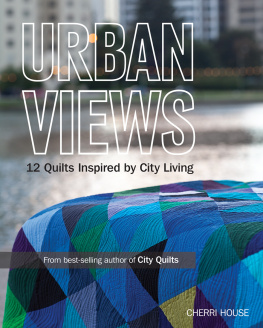
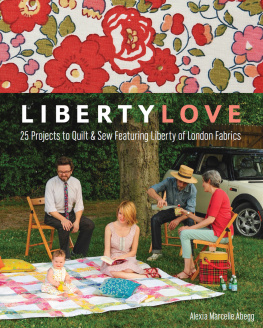
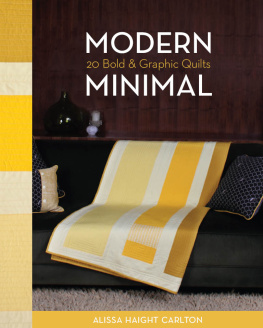
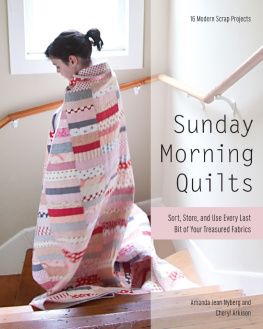



 of a yard. Most pattern yardage in this book allows for fabric shrinkage and the cutting of an extra strip or an additional
of a yard. Most pattern yardage in this book allows for fabric shrinkage and the cutting of an extra strip or an additional